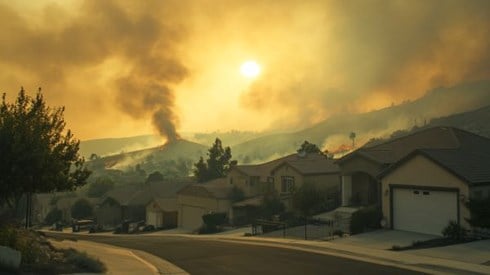Secondary Peril Losses Persist as US P&C Insurers Seek Rate Adequacy

February 21, 2025

Despite an estimated $2.6 billion net underwriting loss in 2024, the US property and casualty (P&C) insurance industry saw a significant improvement from the previous year, with momentum expected to continue into 2025, according to a new AM Best report. Higher interest rates have strengthened insurers' investment yields, helping offset the impact of weather-related losses.
The annual Review & Preview Best's Market Segment Report states that the industry recorded a $24.6 billion underwriting loss in 2023, which was mitigated by $72.4 billion in net investment income. In 2024, underwriting losses narrowed, while net investment income is estimated to have risen to $85.4 billion, with projections reaching $100.8 billion in 2025.
Commercial lines benefited from positive rate trends in most business segments, while personal lines improved due to pricing adjustments, claims-handling strategies, and better risk selection. The personal auto and homeowners segments ended 2024 with a combined ratio of 101 percent, an improvement from the 107 percent recorded in 2023.
"On a net basis, both the homeowners multiperil and private passenger auto businesses generated more favorable loss ratios through year end, reflecting the aggressive push for rate adequacy among primary personal lines insurers since early 2022," said Greg Williams, managing director at AM Best.
AM Best projects a 7.3 percent increase in net premiums written for the industry in 2025, following an estimated 10 percent rise in 2024. Personal lines premiums are estimated to have grown by 12.9 percent in 2024, with a projected 9 percent increase in 2025. "Insurers are more determined than ever to achieve the rate increases necessary to address their calculated rate needs, particularly for the lines of coverage such as private passenger auto and homeowners multiperil," said Mr. Williams.
Economic losses from weather-related events were substantial, with only about half covered by insurance. Two major hurricanes, Helene and Milton, accounted for a significant portion of the losses, alongside severe convective storms. The growing frequency and severity of such disasters are expected to keep homeowners insurance costs elevated.
In California, recent wildfires, regulatory changes, and some insurers exiting the market could have notable effects on coverage availability. Meanwhile, social inflation, litigation financing, and macroeconomic pressures contributed to rising commercial lines claims costs in 2024, potentially straining prior-year loss reserves, particularly for casualty lines.
Reinsurance challenges also added complexity for insurers, as some reinsurers adjusted their risk appetites for catastrophe-exposed personal and commercial property risks. "These headwinds could weaken prior year loss reserve adequacy over the near term, especially for casualty lines of coverage," said Jacqalene Lentz, senior director at AM Best.
Copyright © 2025 by A.M. Best Rating Services, Inc. and/or its affiliates. ALL RIGHTS RESERVED.
February 21, 2025
